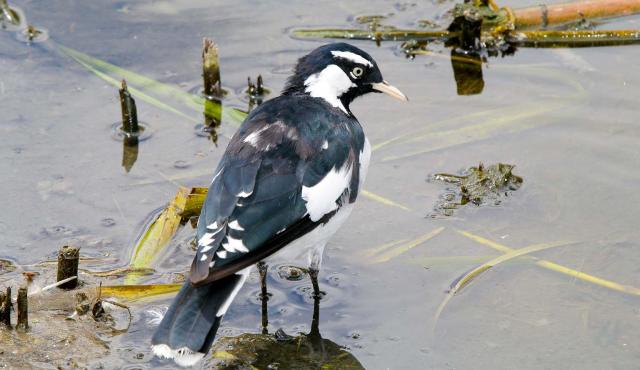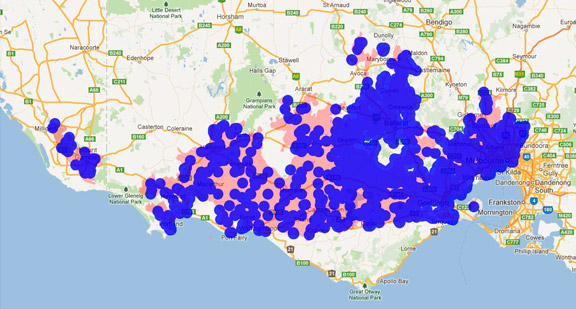A range of teacher professional learning programs will be developed to accompany the Biodiversity of the Western Volcanic Plains online outreach...




Magpie-lark
Grallina cyanoleuca
Breeds from August through to February, particularly after rain. Builds a bowl-shaped mud nest, often up to 20 m off the ground in the branch of a tree. Clutch size is 3-5 eggs. Incubation is carried out by both parents for 18 days. More than one brood may be produced if conditions are favorable. Aggressively defends nest and territory.
| Details | Description |
| Type | Bird |
| Group | Magpie-lark |
| Other Common Names | Mudlark, Peewee, Little or Murray Magpie |
| Identifying Characteristics | |
| Distinctive Markings | Distinguishing black and white colour. |
| Diet | Carnivore. Insects, insect larvae, earthworms, freshwater invertebrates. |
| Habitat | Diverse habitats from coastal to semi-desert. Anywhere with water and trees. Adapted well to altered environments, especially those with permanent water bodies. |
| Native Status | Native to Australia |
| Sounds | Mellow, ringing "tui - weet, tui - weet", "cluip - cluip, cluip - cluip". In alarm "treee - treee". In flight together "qwoo - whik". |
| Taxonomy | |
| Phylum | Chordata |
| Class | Aves |
| Order | Passeriformes |
| Family | Monarchidae |
| Genus | Grallina |
| Species | cyanoleuca |

Distribution maps indicate current and historic locations where species have been sighted.
Source: Atlas of Living Australia
| Conservation Status | |
| DEPI Advisory List | Not listed |
| FFG Act | Not listed |
| EPBC Act | Not listed |
The conservation status of species is listed within Victoria and Australia.
The Department of Environment and Primary Industry (DEPI) Advisory List consists of non-statutory advisory lists of rare or threatened flora and fauna within Victoria.
The Flora and Fauna Guarantee Act 1988 (FFG Act) lists threatened species in Victoria. Under the Act, an Action Statement is produced for each listed species.
The Environment Protection and Biodiversity Conservation Act 1999 (EPBC Act) is the Australian Government’s key piece of environmental legislation, listing nationally threatened native species and ecological communities.



